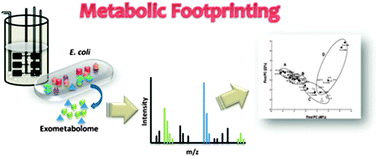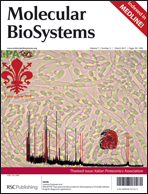Metabolic footprinting has become a valuable analytical approach for the characterization of phenotypes and the distinction of specific metabolic states resulting from environmental and/or genetic alterations. The metabolic impact of heterologous protein production in Escherichia colicells is of particular interest, since there are numerous cellular stresses triggered during this process that limit the overall productivity, e.g. the stringent response. Because the knowledge on the metabolic responses in recombinant bioprocesses is still scarce, metabolic footprinting can provide relevant information on the intrinsic metabolic adjustments. Thus, the metabolic footprints generated by E. coli W3110 and the ΔrelA mutant strain during recombinant fed-batch fermentations at different experimental conditions were measured and interpreted. The IPTG-induction of the heterologous protein expression resulted in the rapid accumulation of inhibitors of the glyoxylate shunt in the culture broth, suggesting the clearance of this anaplerotic route to replenish the TCA intermediaries withdrawn for the additional formation of the heterologous protein. Nutritional shifts were also critical in the recombinant cellular metabolism, indicating that cells employ diverse strategies to counteract imbalances in the cellular metabolism, including the secretion of certain metabolites that are, most likely, used as a metabolic relief to survival processes.

You have access to this article
 Please wait while we load your content...
Something went wrong. Try again?
Please wait while we load your content...
Something went wrong. Try again?


 Please wait while we load your content...
Please wait while we load your content...